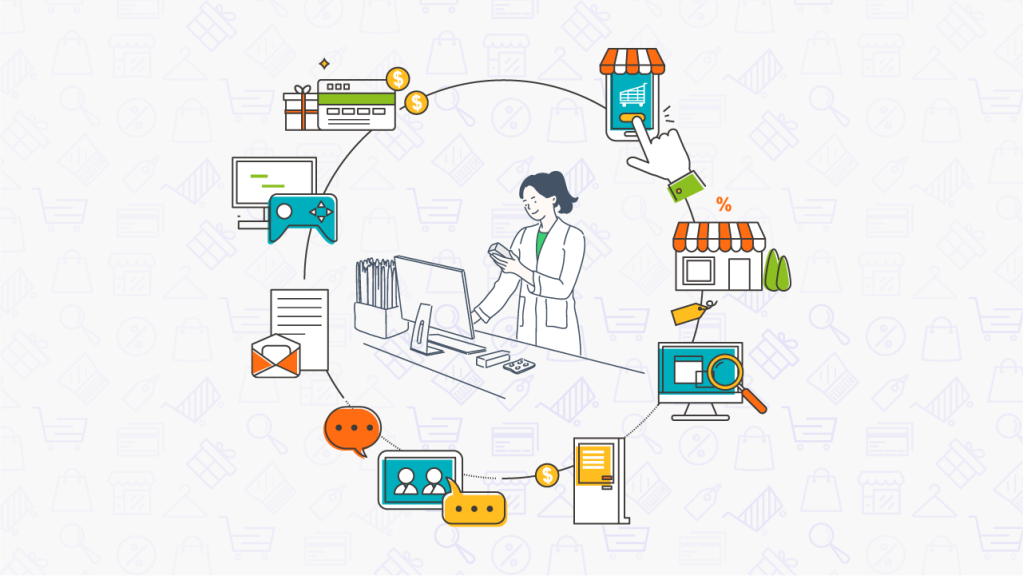Harnessing Data and Automation: Keys to Omni-Channel Success
Harnessing Data and Automation: Keys to Omni-Channel Success

Understanding Omni-Channel vs. Multi-Channel Retailing
In the ever-evolving realm of retail, the terms “omni-channel” and “multi-channel” are often used interchangeably, which can create confusion. To set the record straight, multi-channel retailing involves operating on multiple platforms, but it may not necessarily provide a seamless transition between these channels. On the other hand, omni-channel retailing takes things a step further by seamlessly integrating these platforms, thereby offering customers a unified and cohesive shopping experience. This paradigm shift towards omni-channel retailing has been significantly influenced by the evolving demands of consumers who yearn for a shopping experience that’s not only convenient but also effortless.
The Significance of Omni-Channel Retailing
Omni-channel retailing holds immense significance for businesses, primarily because of its profound impact on building and nurturing long-term customer relationships. In recent years, consumers’ preferences have increasingly shifted towards more convenient shopping methods, and omni-channel retailing effectively addresses this by providing a shopping experience that’s both convenient and exceptional.
Implementing a Successful Omni-Channel Strategy
To harness the full potential of omni-channel retailing, businesses should embrace a few key strategies:
- Consistency is Key: Building brand awareness is pivotal for the long-term success of your business. Whether you’re initiating your omni-channel strategy or already have one in place, it’s crucial to ensure that your brand’s tone of voice, messaging, and graphics are consistent across all platforms. Research by Visual.ly reveals that 81% of social media users visited a brand’s website after seeing it advertised. Therefore, ensuring that your brand is consistent across all sites is fundamental for building customer trust and a strong brand identity.
- Leverage Data: A customer’s omni-channel journey should be optimized to meet their individual needs, which is where data becomes your best friend. Utilizing the data gathered from various channels and touchpoints can inform crucial business decisions. Although analyzing data can be time-consuming, the insights gained and the benefits of the changes made as a result are invaluable. A few tips for harnessing the power of data include:
- Analyzing customer behavior across all your platforms
- Tailoring the customer experience to different devices and preferences
- Making everything as easy as possible for your customers, from finding the products they need to recommending items similar to their previous purchases
- Increase Automation: Managing multiple channels can be complex, and that’s where automation comes in. Automating various aspects of your operations can greatly improve efficiency and free up valuable time for your teams to focus on critical tasks. Automation tools can help with tasks like inventory management, order fulfillment, and delivery, streamlining processes and allowing your teams to allocate their time and resources more efficiently.
Key Benefits of Omni-Channel Retailing
Achieving operational excellence is central to competing with Amazon. Businesses should focus on four key areas:

Increased Brand Awareness: Implementing an omni-channel strategy enhances your brand’s visibility across a spectrum of platforms. Whether it’s through online marketplaces, mobile apps, social media, eCommerce websites, or physical stores, your brand becomes omnipresent. An illustrative example of omni-channel in action is a customer discovering your business on Instagram, then seamlessly transitioning to your eCommerce website with their selected item still neatly tucked in their cart.

Higher Customer Engagement and Retention: The seamless and consistent shopping experience offered by omni-channel retailing increases the likelihood of customers returning to your store for refills, replacements, or to make new purchases. To foster and cement customer loyalty, businesses must complement their omni-channel strategy with unwaveringly excellent customer service, encouraging customers to keep coming back.

Enhanced Insight into Customer Behavior: In the dynamic world of eCommerce, data is an invaluable resource. It provides businesses with crucial insights into what customers are interested in, when they shop, and how they shop. Omni-channel retailing enhances this insight by allowing businesses to track customer behavior across multiple owned channels. This, in turn, enables ongoing optimization, ensuring that customers have an even better experience with each interaction

Expanding the Target Audience: Operating on multiple channels naturally expands your reach, bringing you closer to more people within your target audience and increasing customer purchases. Moreover, by providing customers with an experience they’ll remember, they are more likely to share their positive experiences with friends and family. Word of mouth remains a potent form of advertising, with Nielsen’s research indicating that 92% of customers trust referrals from their friends and family.
Integrating ERP Solutions for Omni-Channel Success
For businesses venturing into the dynamic realm of omni-channel retailing, integrating robust ERP solutions like SAP Business One is paramount. ERP (Enterprise Resource Planning) systems streamline and synchronize key business processes, facilitating seamless operations across multiple channels. SAP, which stands for Systems, Applications, and Products in Data Processing, offers a comprehensive suite of ERP solutions tailored to meet the diverse needs of modern retailers.
By leveraging SAP Business One, businesses can centralize data management, optimize inventory, and enhance customer service, thereby fortifying their omni-channel strategy. The integration of ERP solutions not only fosters operational efficiency but also empowers businesses to adapt and thrive in an increasingly competitive landscape
How ShipStation Facilitates Omni-Channel Success
ShipStation is dedicated to supporting omni-channel retailers in achieving their goals by streamlining their operations. The software offers a range of features designed to make order fulfillment and delivery effortless:
- Automatic Order Import: ShipStation enables businesses to automatically import orders from various selling channels.
- Seamless Integration: The software seamlessly integrates with over 100 online marketplaces, stores, and shopping carts, making it an indispensable tool for businesses with a diverse online presence.
- Efficient Order Fulfillment and Delivery: ShipStation simplifies the process of order fulfillment and delivery, ensuring that customers have a positive experience while maintaining brand consistency.
In conclusion, the future of retail undeniably belongs to omni-channel retailing. By adopting and implementing this approach along with the strategies outlined above, businesses can not only succeed but excel in the evolving retail landscape. Omni-channel retailing simplifies various aspects of multi-channel operations, enhancing the customer journey in our interconnected world.
VERSINO CZ Intelligent Enterprise IBC Containers

